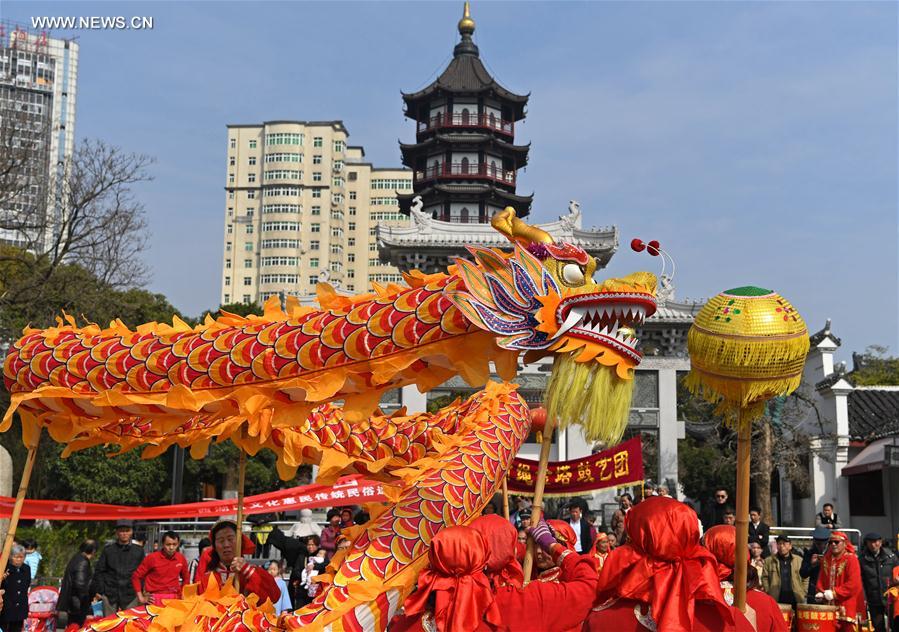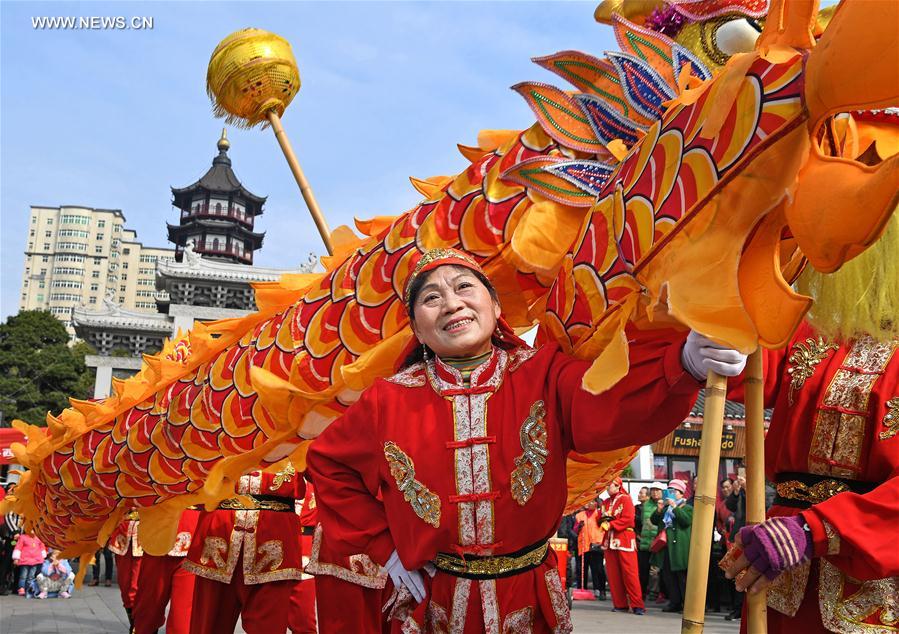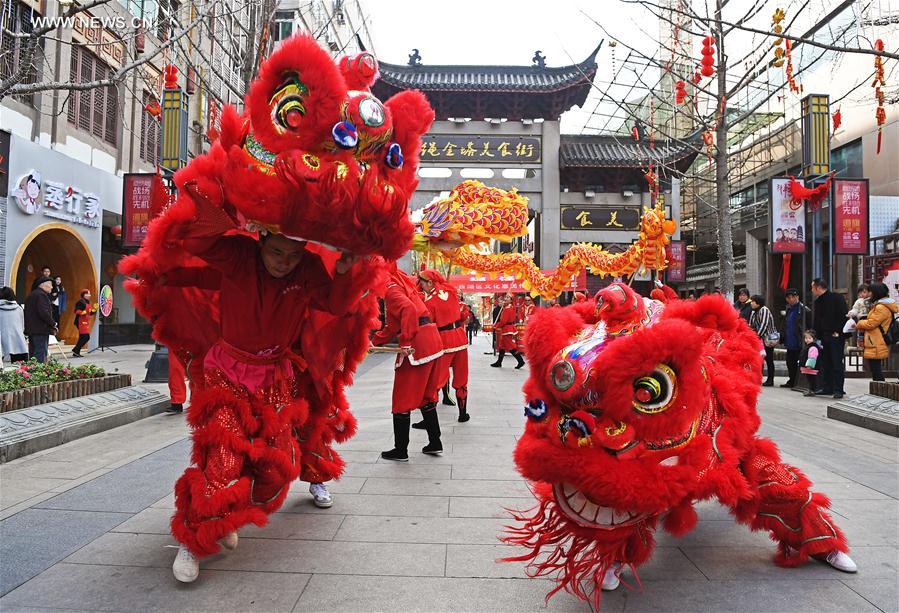
People perform dragon dance in Nanchang, capital of east China's Jiangxi Province, Feb. 27, 2017. Er Yue Er fell on Feb. 27 this year. Chinese people call it the day when the "dragon raises its head", which means the spring awakens after winter hibernation. People usually have their hair cut or hold celebrations to greet the day. (Xinhua/Wan Xiang)

People perform dragon dance in Nanchang, capital of east China's Jiangxi Province, Feb. 27, 2017. Er Yue Er fell on Feb. 27 this year. Chinese people call it the day when the "dragon raises its head", which means the spring awakens after winter hibernation. People usually have their hair cut or hold celebrations to greet the day. (Xinhua/Wan Xiang)

People perform lion dance in Nanchang, capital of east China's Jiangxi Province, Feb. 27, 2017. Er Yue Er fell on Feb. 27 this year. Chinese people call it the day when the "dragon raises its head", which means the spring awakens after winter hibernation. People usually have their hair cut or hold celebrations to greet the day. (Xinhua/Wan Xiang)

People perform dragon dance in Nanchang, capital of east China's Jiangxi Province, Feb. 27, 2017. Er Yue Er fell on Feb. 27 this year. Chinese people call it the day when the "dragon raises its head", which means the spring awakens after winter hibernation. People usually have their hair cut or hold celebrations to greet the day. (Xinhua/Wan Xiang)

People perform lion dance in Nanchang, capital of east China's Jiangxi Province, Feb. 27, 2017. Er Yue Er fell on Feb. 27 this year. Chinese people call it the day when the "dragon raises its head", which means the spring awakens after winter hibernation. People usually have their hair cut or hold celebrations to greet the day. (Xinhua/Wan Xiang)